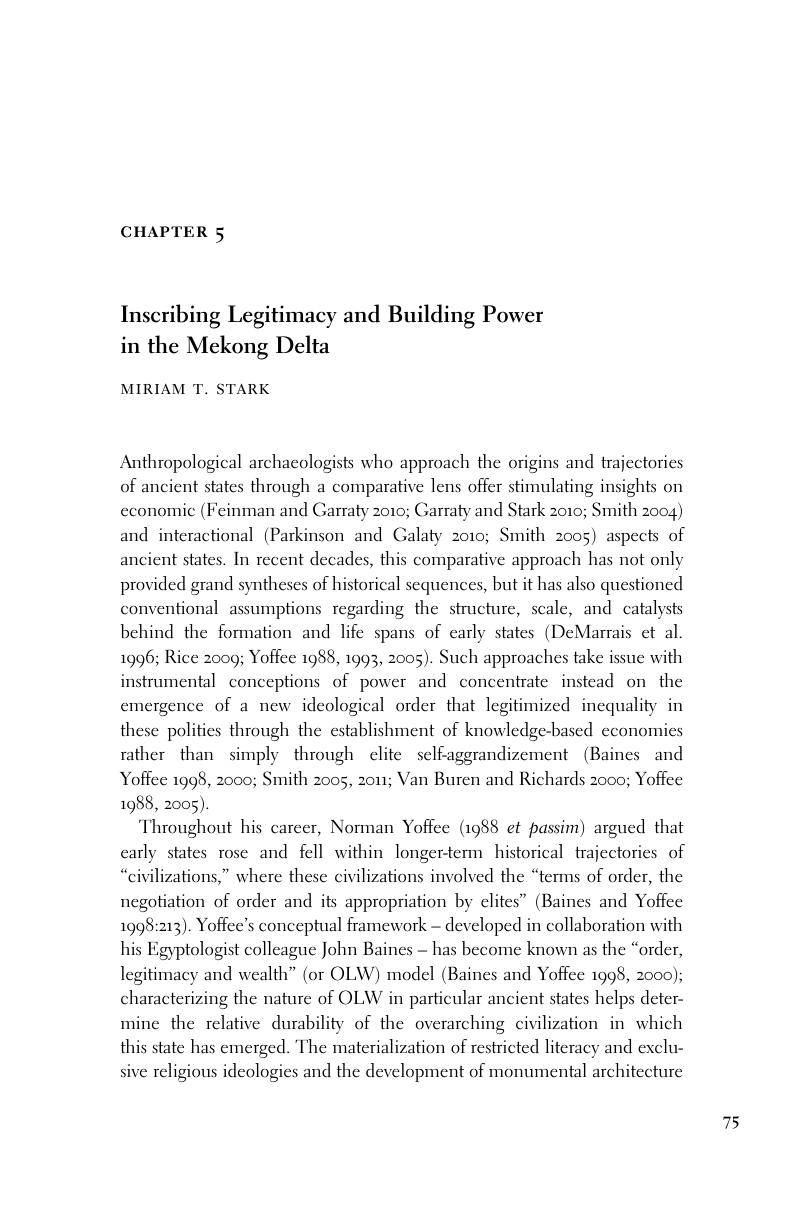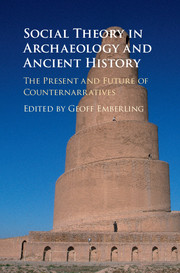Book contents
- Social Theory in Archaeology and Ancient History
- Social Theory in Archaeology and Ancient History
- Copyright page
- Contents
- Figures
- Tables
- Contributors
- Preface
- Part One Introduction
- Part Two Cultural Trajectories
- 2 Social Evolutionary Theory and the Fifth Continent: History Without Transformation?
- 3 Structures of Authority: Feasting and Political Practice in the Earliest Mesopotamian States1
- 4 Counternarratives and Counterintuition: Accommodating the Unpredicted in the Archaeology of Complexity
- 5 Inscribing Legitimacy and Building Power in the Mekong Delta
- Part Three Cities, States, and Empires
- Part Four Collapse and Resilience
- Part Five Archaeology and History
- Part Six Commentary
- Index
- References
5 - Inscribing Legitimacy and Building Power in the Mekong Delta
from Part Two - Cultural Trajectories
Published online by Cambridge University Press: 05 November 2015
- Social Theory in Archaeology and Ancient History
- Social Theory in Archaeology and Ancient History
- Copyright page
- Contents
- Figures
- Tables
- Contributors
- Preface
- Part One Introduction
- Part Two Cultural Trajectories
- 2 Social Evolutionary Theory and the Fifth Continent: History Without Transformation?
- 3 Structures of Authority: Feasting and Political Practice in the Earliest Mesopotamian States1
- 4 Counternarratives and Counterintuition: Accommodating the Unpredicted in the Archaeology of Complexity
- 5 Inscribing Legitimacy and Building Power in the Mekong Delta
- Part Three Cities, States, and Empires
- Part Four Collapse and Resilience
- Part Five Archaeology and History
- Part Six Commentary
- Index
- References
Summary

- Type
- Chapter
- Information
- Social Theory in Archaeology and Ancient HistoryThe Present and Future of Counternarratives, pp. 75 - 106Publisher: Cambridge University PressPrint publication year: 2015
References
References Cited
- 2
- Cited by



